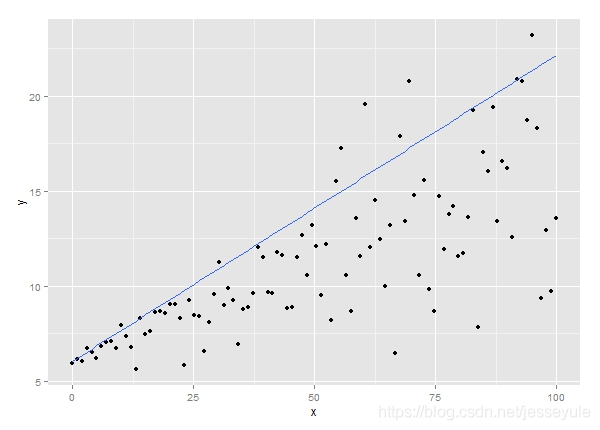@Temporal Fusion Transformers for Interpretable Multi-horizon Time Series Forecasting
核心贡献
-
Temporal Fusion Transformer 框架 #card
-
recurrent layers for local processing
ls-type:: annotation
hl-page:: 1
hl-color:: yellow -
interpretable self-attention layers for long-term dependencie
ls-type:: annotation
hl-page:: 1
hl-color:: yellow -
specialized components to select relevant features
ls-type:: annotation
hl-page:: 1
hl-color:: yellow -
a series of gating layers to suppress unnecessary components
ls-type:: annotation
hl-page:: 1
hl-color:: yellow
-
-
模型可解释性 interpretable insights into temporal dynamics
ls-type:: annotation
hl-page:: 1
hl-color:: yellow
#card-
区分全局重要特征 globally-important variables for the prediction problem
ls-type:: annotation
hl-page:: 3
hl-color:: yellow -
持久的时间模式 persistent temporal patterns
ls-type:: annotation
hl-page:: 3
hl-color:: yellow -
显著事件 significant events
ls-type:: annotation
hl-page:: 3
hl-color:: yellow
-
核心问题
-
#card [[Multi-horizon Forecasting]] 包含复杂的输入特征组合 contains a complex mix of inputs
ls-type:: annotation
hl-page:: 1
hl-color:: green-
静态变量
- 与时间无关的静态变量 including static (i.e. time-invariant) covariates
ls-type:: annotation
hl-page:: 1
hl-color:: green
- 与时间无关的静态变量 including static (i.e. time-invariant) covariates
-
时变变量 Time-dependent Inputs
-
已知未来输入 known future inputs,
ls-type:: annotation
hl-page:: 1
hl-color:: green- 未来节假日信息
-
外生时间序列 exogenous time series that are only observed in the past – without any prior information on how they interact with the target.
ls-type:: annotation
hl-page:: 1
hl-color:: green- 历史顾客流量 historical customer foot traffic
ls-type:: annotation
hl-page:: 2
hl-color:: green
- 历史顾客流量 historical customer foot traffic
-
-
相关示意图
- [:span]
ls-type:: annotation
hl-page:: 2
hl-color:: yellow
- [:span]
-
-
使用 attention 机制增强 :-> 选择过去相关特征 used attention-based methods to enhance the selection of relevant time steps in the past
ls-type:: annotation
hl-page:: 2
hl-color:: yellow -
之前基于 DNN 方法的缺陷 #card
-
没有考虑不同类型输入特征 fail to consider the different types of inputs
ls-type:: annotation
hl-page:: 2
hl-color:: blue- 万物皆时序 构建模型时,将所有的特征按 time step 直接 concat 在一起,所有变量全部扩展到所有的时间步,无论是静态、动态的变量都合并在一起送入模型。
-
假定所有外生输入都已知与未来 assume that all exogenous inputs are known into the future
ls-type:: annotation
hl-page:: 2
hl-color:: blue -
忽略重要的静态协变量 neglect important static covariates
ls-type:: annotation
hl-page:: 2
hl-color:: blue- 通常处理方法是预测时和其他时间相关特征连接
-
-
已有深度学习方法是黑箱,如何解释模型的预测结果?#card
- do not shed light on how they use the full range of inputs present in practical scenarios
ls-type:: annotation
hl-page:: 1
hl-color:: blue
- do not shed light on how they use the full range of inputs present in practical scenarios
相关工作
-
[[@A Multi-Horizon Quantile Recurrent Forecaster]] Multi-horizon Quantile Recurrent Forecaster MQRNN 结构,同时预测未来多个时间步的值
-
deep state space 状态空间模型,统计学,hybrid network,类似工作 [[ESRNN]] [[N-BEATS]]
-
-
post-hoc methods 事后方法(因果方法),不考虑输入特征的时间顺序 do not consider the time ordering of input features
ls-type:: annotation
hl-page:: 3
hl-color:: blue-
[[LIME]]
-
-
基于 attention 的架构对语言或语音序列有很好的解释,但是很难适用于多维度预测 attention-based architectures are proposed with inherent interpretability for sequential data
ls-type:: annotation
hl-page:: 3
hl-color:: blue
-
解决方法
-
[[Multi-horizon Forecasting]]
-
prediction intervals [[区间预测]] #card
- [[DeepAR]] 直接修改模型的输出,模型不拟合原始标签,而是拟合人工指定的分布,通过蒙特卡洛采样取平均得到最终的点预测。
-
分位数回归 [[Quantile Regression]],每一个 time step 输出 #card
-
不同分位数下预测能够产生预测区间,通过区间大小反应预测结果的不确定性。某个点在不同分位数线性回归的预测结果很接近,则预测确定性搞。
-
Quantile Outputs
-
-
设计 [[quantile loss]]
-
- #card
-
q 代表分位数
-
-
假设拟合分位数 0.9
-
- #card
-
-
-

+ $Q L(y, \hat{y}, q=0.9)=\max (0.9 *(y-\hat{y}), 0.1 *(\hat{y}-y))$
+ $y-\hat{y} \gt 0$ 模型预测偏小,Loss 增加更多
+ loss 中权重 9:1,模型倾向预测出大的数字,Loss 下降快
+ 假设拟合分位数 0.5,退化成 MAE
+ $Q L(y, \hat{y}, q=0.5)=\max (0.5 *(y-\hat{y}), 0.5 *(\hat{y}-y)) = 0.5*|y-\hat{y}|$
+ q-Risk 避免不同预测点下的预测量纲不一致问题,对结果做正则化处理。目前只关注 P50 和 P90 两个分位数 #card
+ $q$-Risk $=\frac{2 \sum_{y_t \in \tilde{\Omega}} \sum_{\tau=1}^{\tau_{\max }} Q L\left(y_t, \hat{y}(q, t-\tau, \tau), q\right)}{\sum_{y_t \in \tilde{\Omega}} \sum_{\tau=1}^{\tau_{\max }}\left|y_t\right|}$
-
模型结构 #card
- [:span]
ls-type:: annotation
hl-page:: 6
hl-color:: yellow
- [:span]
-
输入部分
-
[[Static Covariate Encoders]] 通过 GRN 将静态特征编码变成 4 个不同向量
-
动态特征 #card
-
post inputs
-
known future inputs
-
-
[[Variable Selection Networks]] 通过选择重要的特征,减少不必要的噪音输入,以提供模型性能。 #card
- [[GLU]] 灵感来自 LSTM 的门控机制,sigmoid 取值范围 0-1
-
对不同类型的输入变量应该区别对待 #card
-
静态变量通过特殊的 [[Static Covariate Encoders]],后续做为 encoder 和 decoder 的输入
-
过去的动态时变变量+动态时不变变量进入 encoder 结构中(蓝色 variable seletcion)
-
未来的动态时不变变量进入 decoder 结构中
-
-
seq2seq with teacher forcing 架构 #card
-
encoder 部分动态特征 embedding 和静态特征 embedding concat 在一起做为输入
- 静态变量 + 动态时变变量
-
decoder
- 静态变量 + 动态时不变变量
-
-
-
模型组成
-
[[Gated Residual Network]] 模型能够灵活地仅在需要时应用非线性处理 #card
-
外生输入和目标之间的确切关系通常是事先未知的,因此很难预见那些变量是相关的。
-
很难确定非线性处理的程度该多大,并且可能存在更简单的模型就能满足需求。
-
-
[[Temporal Fusion Decoder]] 学习数据集中的时间关系
-
通过 dense 层得到多个 [[Quantile Outputs]] #card
-
[[TFT Interpretability Use Cases]] #card
-
输入特征重要性 examining the importance of each input variable in prediction
ls-type:: annotation
hl-page:: 17
hl-color:: yellow -
可视化当前时间模式 visualizing persistent temporal patterns
ls-type:: annotation
hl-page:: 17
hl-color:: yellow -
识别导致任何导致时间动态显著变化的时间 identifying any regimes or events that lead to significant changes in temporal dynamics
ls-type:: annotation
hl-page:: 17
hl-color:: yellow
[[Ref]]
-
[[@A Multi-Horizon Quantile Recurrent Forecaster]]